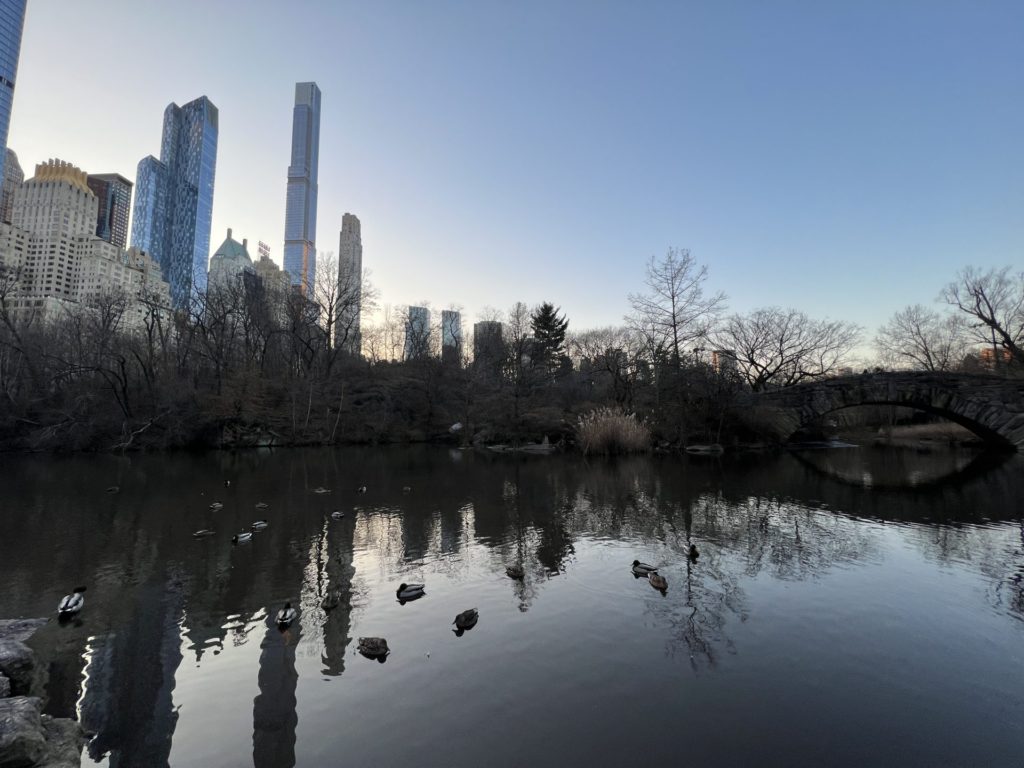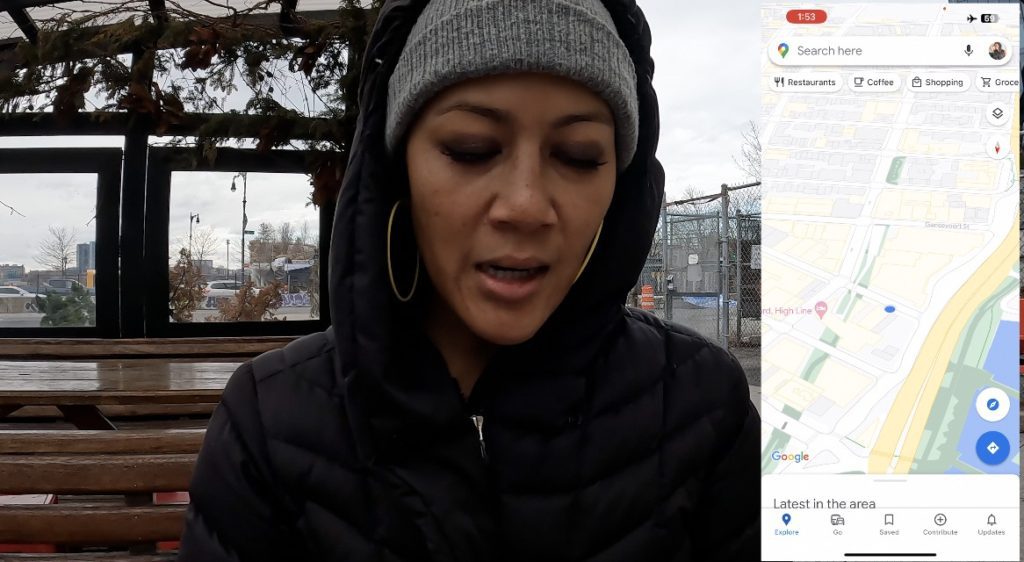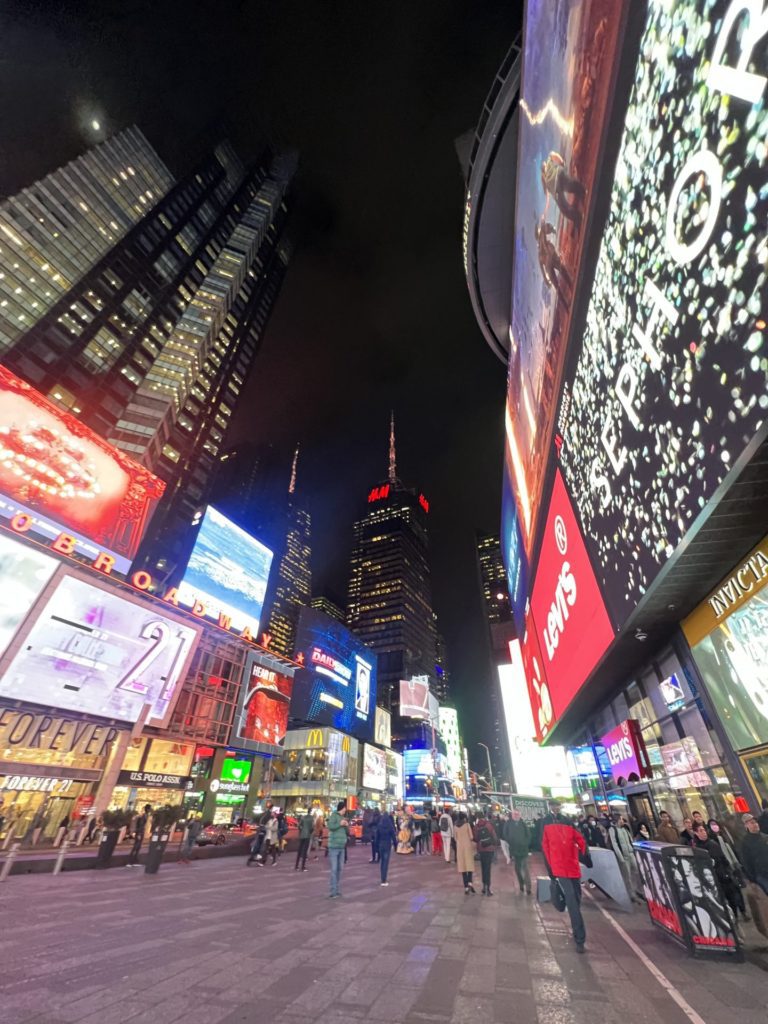Over 1 billion people use Google Maps every month, but many don’t know some of the key tips that can help travelers that are new or navigating a city to guarantee not getting lost.
In this blog post you’ll find some of the key tips many Google Maps users aren’t aware of that can help you to easily get around a big city like New York.

Download the Google Map of Your Travel Destination
Whether you are traveling in somewhere like New York City where sometimes cell phone service is spotty (especially if you are in the subway or coming out of the subway) or if you are coming from abroad and don’t have cell phone service at all, downloading the Google Map will allow you to navigate even WITHOUT having any service.
You can see in the map below I’m still able to see where I’m at on the map along with information about streets and businesses even though I am in airplane mode because I have downloaded the map.

7 Easy Steps to Download Google Maps for Offline Use
Follow along in the full video tutorial or use the simple steps below to download Google Maps.
- Open the Google Maps app on your Android or iOS device.
- Search for the location or area you want to download.
- Tap the name or address of the location at the bottom of the screen.
- Tap the three dots icon in the upper right-hand corner of the screen.
- Select “Download offline map” or “Download offline area”.
- Adjust the map area to be downloaded by moving the map or zooming in/out, and then tap on “Download”.
- Wait for the map to download. The time it takes will depend on the size of the area you are downloading and your internet connection speed.
Once the download is complete, you can access the downloaded map by going to the “Offline maps” section in the Google Maps app. The downloaded map will remain available on your device for a limited time, after which it will need to be re-downloaded to remain available for offline use.
Want to check your work?
Put your phone in airplane mode and try using Google Maps to see what information is available!
Full video tutorial!
Want more helpful tips or want to see the full video tutorial? Checkout the video below!
Quick tip
NOT looking lost can help you to safely travel New York City and not be targeted for one of the many scams around the city. Some of the scams to lookout for can be found in the full blog post below.
Don’t Start Your NYC Trip Getting Lost
Need help with how to take the train from JFK into Manhattan? Click here for a quick video to help you quickly and easily get from the airport into New York City!
3 pro travel tips for booking hotels!
1. After booking your hotel, check rates again prior to your trip. Hotel prices fluctuate week to week and sometimes the hotel rate will drop
2. Filter hotel results by traveler rating. While star rating is important, it’s not the only way to rate a hotel
3. Join the hotel loyalty program. Even if you’re not sure you’ll stay at that hotel group again, it never hurts to accumulate points
Additional Tips to Not Get Lost in NYC
Here are some additional tips help you navigate NYC!
- Familiarize yourself with the layout: NYC is divided into five boroughs: Manhattan, Brooklyn, Queens, The Bronx, and Staten Island. Manhattan, the most visited borough, has a grid-like street system with avenues running north-south and streets running east-west.
- Use a map or GPS: Carry a physical map or download a digital map on your phone. Popular map applications like Google Maps and Apple Maps offer offline options. You can also use dedicated apps like Citymapper or the MTA’s own app for real-time public transit information.
- Understand the street numbering system: In Manhattan, streets are numbered and run east-west. Avenues are numbered (with a few exceptions like Lexington, Madison, and Park) and run north-south. Higher-numbered streets are located further uptown (north), and higher-numbered avenues are further west.
- Use landmarks: NYC is known for its iconic landmarks. The Empire State Building, Central Park, and the World Trade Center are just a few examples. Familiarizing yourself with these landmarks can help you orient yourself while navigating the city.
- Take note of subway entrances: Each subway entrance is marked with a green globe or a red globe. Green means the station is open 24/7, while red means it’s closed at night. Use these signs to help you locate subway stations.
- Get acquainted with public transportation: The NYC subway system is an efficient way to get around. Be aware of the different subway lines, their colors, and the direction they’re heading (Uptown, Downtown, or to another borough). Buses are also available and can be useful for shorter distances or when the subway isn’t convenient.
- Ask for help: New Yorkers are known for being direct, but they can also be very helpful. If you’re lost or unsure about directions, don’t hesitate to ask someone nearby.
- Stay aware of your surroundings: Pay attention to street signs, landmarks, and the flow of pedestrian traffic. Avoid walking with your nose buried in your phone or map.
- Plan your route ahead of time: Before venturing out, plan your route and make a mental note of the streets and landmarks you’ll pass along the way.
- Download an offline subway map: In case you lose phone service, it’s a good idea to have an offline subway map downloaded on your device. The MTA also provides free subway maps at most stations.
By following these tips, you can minimize your chances of getting lost and make the most of your time in New York City.

Quick tip!
When booking tours in NYC, it’s important to book ones with top traveler reviews and are easily refundable if travel plans change.
Bottom Line
By knowing some of these quick tips like downloading the map for when you don’t have cell phone service or how to navigate where to walk based on the direction of traffic you can save time not getting lost and also important: not LOOK lost and be the target of people that may be wanting to scam tourists.
Make sure you know about the top tourism scams in NYC so you know what to look out for by reading this blog post, or read on for more helpful travel tips.